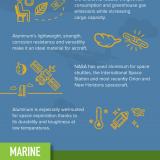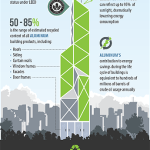All over the world, people are wandering through the streets staring at their smartphones. Whether you’re part of the PokémonGo phenomenon that has taken the world by storm, or whether you can only shake your head, you don’t only have Nintendo to thank for. One of the Co-Product Metals we’re focusing on this week as part of our “Through the Gateway” campaign plays an important role in allowing you to track down your favorite Pokémon in your neighborhood for hours on end: Gallium.
The “smart metal”, as USGS has dubbed Gallium, is one of the Periodic Table’s premier social networkers: it forms compounds with various elements. Among those are Gallium Arsenide (GaAs) and Gallium Nitride (GaN), the strong semiconducting properties of which make them key components of the integrated circuits of smartphones and other wireless communication devices.
Today, its use as semiconductor compound is Gallium’s major application. CIGS compounds (with CIGS standing for Copper-Indium-Gallium-Selenide) are also used in solar technology with CIGS photovoltaic panels promising to efficiently capturing sun rays. Gallium is also a component in other optoelectronic devices (LEDs, photodectors) in aerospace applications, consumer goods, industrial equipment and medical equipment.
While it is an Aluminum co-product, Gallium is significantly less abundant in the earth’s crust than its main Gateway Metal. Many Bauxite deposits which are mined and processed for Aluminum contain small amounts of Gallium, as do Zinc deposits. However, most of the Gallium we use today is derived from the processing of Bauxite Ore.
In spite of the fact that we are home to significant Aluminum deposits, the United States is 100% reliant on foreign imports to sufficiently supply our domestic manufacturers with the primary Gallium they need. Meanwhile, researchers from Yale University sounded the alarm last year on several metals used in our favorite gadgets – including Gallium – being at risk of running out globally. One of the researchers’ comments aptly underscores the broader challenge associated with Co-Product metals:
“The metals we’ve been using for a long time probably won’t present much of a challenge, (…) But some metals that have become deployed for technology only in the last 10 or 20 years are available almost entirely as byproducts. (…) You can’t mine specifically for them; they often exist in small quantities and are used for specialty purposes. And they don’t have any decent substitutes.”
Even though Gallium is generally considered a scarce resource, it is not so much its overall abundance (or lack thereof) that is problematic here. According to USGS estimates, “world resources of gallium in bauxite exceed 1 billion kilograms and that a considerable quantity of gallium could also be present in world zinc resources.” However, – and that is probably the bigger issue - “[m]ost of the gallium in bauxite resources cannot be considered to be available in the short term, however, because much of the bauxite will not be mined for many decades. Also, only a small percentage of the gallium metal contained in bauxite and zinc ores is economically recoverable using current separation methods. Larger amounts of gallium could be recovered from these ores if more efficient and improved extraction and separation methods are developed in the future.”
As the Pokémon craze continues, and with demand for electronic gadgetry and advanced technology on the rise, Gallium is definitely a material to watch in its own right. But the case of Gallium also underscores why we should care about the relationship between Gateway Metals and their Co-Products in the grand scheme of things, as changing supply and demand scenarios or even mining and refining processes for one can affect the other.







